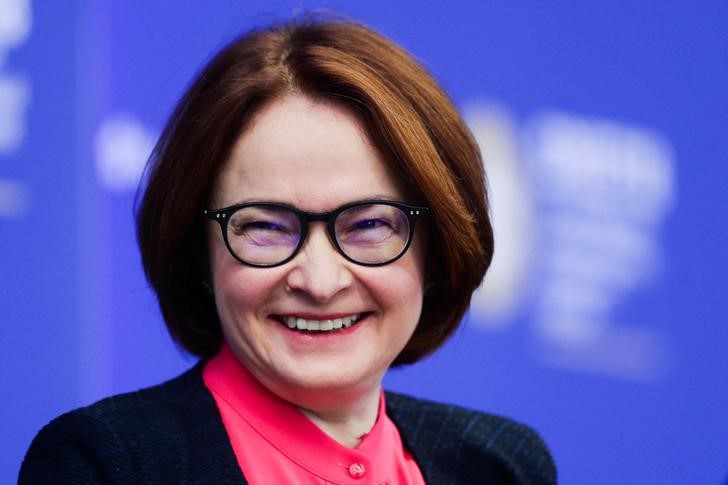 © Reuters. Russian Central Bank Governor Nabiullina attends a session of the St. Petersburg International Economic Forum
© Reuters. Russian Central Bank Governor Nabiullina attends a session of the St. Petersburg International Economic ForumBy Andrey Ostroukh
MOSCOW (Reuters) – The Russian central bank is sticking to its plan to trim rates further as the economy and the financial system have already adapted to the latest U.S. sanctions, Central Bank Governor Elvira Nabiullina said in a CNBC interview released on Thursday.
The central bank held rates in April, having cut them from 17 percent at the end of 2014 to 7.25 percent in March, as fresh U.S. sanctions on Moscow battered the rouble, boosting concerns about geopolitical tensions.
Nabiullina said the central bank was still on track this year to trim the key rate, now at 7.25 percent, to a range of between six and seven percent, the level at which its monetary policy is considered to be neutral.
Nabiullina said the central bank took into account geopolitical risks when making decisions and fully understood that uncertainty has increased.
“I have to say that the Russian economy and the Russian financial system have adapted pretty quickly to the latest wave of economic sanctions,” Nabiullina said, according to the English transcript of the interview.
In April, the United States imposed new sanctions against Russian individuals and major companies. They targeted allies of President Vladimir Putin in one of Washington’s most aggressive moves to punish Moscow for its alleged meddling in the 2016 U.S. election and other “malign activity.”
PRECAUTIONS AGAINST SANCTIONS
Over the past four years, since when the West imposed first sanctions against Russia over its role in the Ukrainian crisis, Russia has become more resilient to external shocks by implementing several structural reforms.
Russia let the rouble float freely and adapted a budget rule that capped the impact of swings in prices for oil, its key exports.
Apart from that, Russia has also created its own payment system similar to SWIFT, facing risks of being cut off from the global payment platform, Nabiullina said.
“This system is already operational and it allows, inside Russia, to transfer financial data,” Nabiullina said.
“We have created an absolutely similar, competing system which allows, at the very least, inside Russia, to nullify such risks,” she said, replying to a question about risks of Russia being banned from using SWIFT.
ECONOMIC OUTLOOK
Speaking about economic prospects, Nabiullina said the economy was seen growing by 1.5-2.0 percent a year in the next few years.
To reach higher growth levels, as Putin called for earlier this year when assuming the office for a new six-year term, Russia needs to proceed with reforms, Nabiullina said.
“It requires structural reforms, in terms of labor productivity, private investment and then the economy can grow at higher rates than it is now,” she said.
But economic growth should not be boosted at the expense of macroeconomic and budget stability and should not spur currently low inflation, which became less vulnerable to volatility in the rouble, Nabiullina said.
Russia’s newly formed government is expected to reveal new measures aimed at quickening economic growth by October, she said.
Source: Investing.com



























